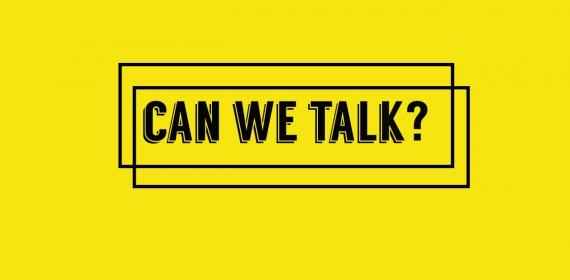
Dear Library Friends,
We need to talk. Bigly.
You do not want your next library management system to work just like Voyager. Or Aleph. Or Millennium.
No. No, you don’t.
First of all, I managed several of these library systems, and I saw your enhancement requests. You didn’t really like that circulation matrix. Or the way that funds and budgets worked. Or the cataloging interface.
Really. You didn’t. Trust me on this.
But second, and more importantly — you don’t want a library system for the future that is heavily modeled on library systems created more than two decades ago.
Would you want to rely on a Motorola StarTac for your communications today? Would you want to win the Anachronist of the Year Award for toting your tunes on a Sony Discman? Would you want to live without the immediacy of Amazon, the convenience of an iPad, the choice offered by Hulu and Netflix?
Nope, didn’t think so.
Yet this is what you are doing when you build new library system functionality based on the standards and practices of the 1990s.
The library community talks about “generations” of library software, but that’s a dangerous fallacy — we’re actually iterating on library software built decades ago, even if we’re technically engaged in new-from-the-ground-up development.
In many of the new product planning discussions that I’ve led over the past decade, I’ve heard the refrain that libraries can’t do anything new until basic functional requirements for an ILS are met, and met in a way that addresses a gamut of existing institutional policies. Projects, I’ve been told, won’t be successful unless we can drive widespread adoption — and that I agree with, because organizations need income to continue investment. But I disagree with the next part of the assertion — that we can’t achieve widespread adoption without replacing pretty much exactly what we already have. What we have now isn’t increasing our capability or our relevance, so why are we making new investments in these same types of solutions?
Further, I continually hear that libraries aren’t ready for — or don’t want — the kind of disruption that would result from a thorough-going assessment of current needs, future opportunities, and existential threats…and the corresponding development of solutions that address those issues. If not now, when? Because I hate to break it to the community, but disruption will be thrust upon us if we don’t change, disruption that has the potential to marginalize our profession and the values that energize our work.
We will never get to where we need to be to remain visible and viable if we continue dragging along the practices of the past, if we continue resisting organizational requirements and carrying on as if nothing is changing. Everything is changing, folks. And we need to change with it.
We need to be disruptive. We need to question everything — not just on a feature-by-feature level, which I do think is happening (albeit to a very limited degree) but on a strategic, big- picture level: what is the business case for libraries as we look to the future, and how do we build solutions that support that business case? We need to make hard decisions about what is essential and what we can leave behind. (In this case, I still love the visual I used awhile back of pioneers embarking on their journey across America — initially loaded down with baggage and, over time, driven to discard pianos and fine china and all of those other things that weren’t critical when push came to shove.)
Now — right now! — you — yes, you! — have the unique chance to be a pioneer, to innovate, to be bold in your decisions about how to address changing user needs and expectations, to identify and respond to a new set of opportunities for our profession. You have a chance to challenge assumptions, question priorities https://www.russellmeansfreedom.com, and propose a different direction that makes libraries much more central to the mission and goals of the academy. You have a chance to leap forward rather than wandering backward.
Please take it.
Article Source : Read More
Written by Kathryn
